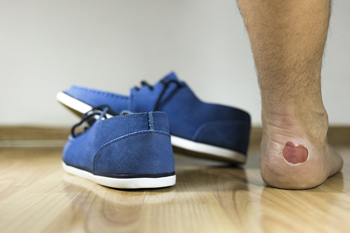
Blisters can form on the feet for a variety of reasons, and blisters can come in many different forms or types. Commonly, when the foot is subject to repeated pressure, blisters can form in response to this pressure. Sometimes, blisters can even form in response to pressure from shoes. It is important to note that under certain conditions, blisters can become infected, which can cause all kinds of problems for an individual. An infected blister on a foot can feel hot to the touch. Additionally, blisters that are infected can appear to have pus that has a green or yellow tint. Sometimes, the skin that surrounds the infected blister might also be discolored. The surrounding skin, for instance, might look slightly red. Contact a podiatrist today if you have questions about infected blisters.
Blisters are prone to making everyday activities extremely uncomfortable. If your feet are hurting, contact one of our podiatrists of Livingston Footcare. Our doctors can provide the care you need to keep you pain-free and on your feet.
Foot Blisters
Foot blisters develop as a result of constantly wearing tight or ill-fitting footwear. This happens due to the constant rubbing from the shoe, which can often lead to pain.
What Are Foot Blisters?
A foot blister is a small fluid-filled pocket that forms on the upper-most layer of the skin. Blisters are filled with clear fluid and can lead to blood drainage or pus if the area becomes infected.
How Do Blisters Form?
Blisters on the feet are often the result of constant friction of skin and material, usually by shoe rubbing. Walking in sandals, boots, or shoes that don’t fit properly for long periods of time can result in a blister. Having consistent foot moisture and humidity can easily lead to blister formation.
Prevention & Treatment
It is important to properly care for the affected area in order to prevent infection and ease the pain. Do not lance the blister and use a Band-Aid to provide pain relief. Also, be sure to keep your feet dry and wear proper fitting shoes. If you see blood or pus in a blister, seek assistance from a podiatrist.
If you have any questions, please feel free to contact our office located in North Brunswick, NJ . We offer the newest diagnostic and treatment technologies for all your foot care needs.

 (732) 246-1377
(732) 246-1377



